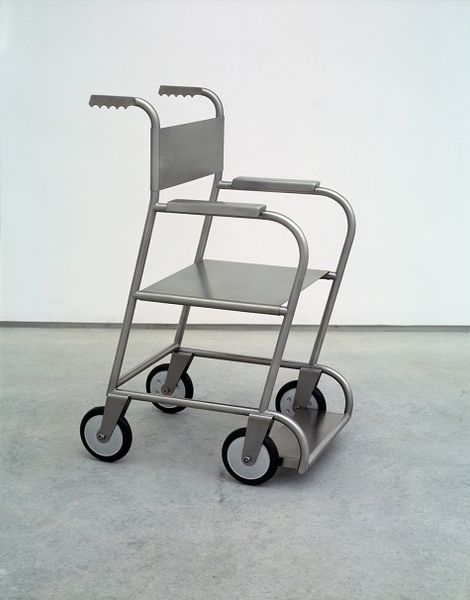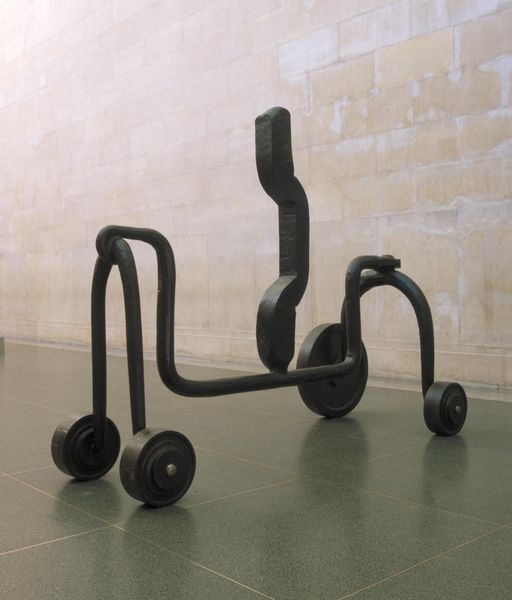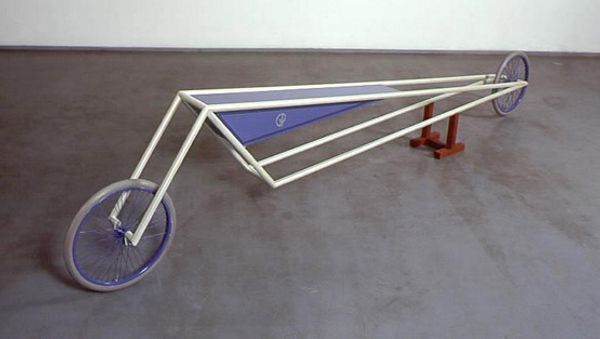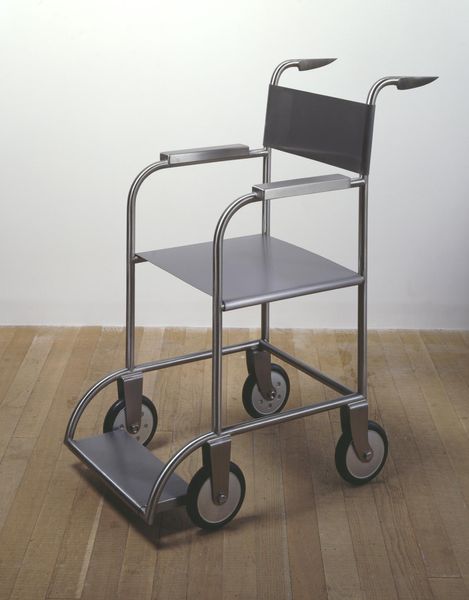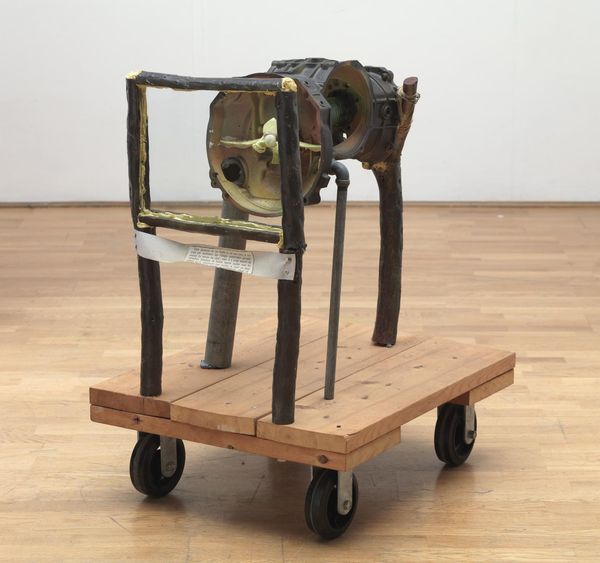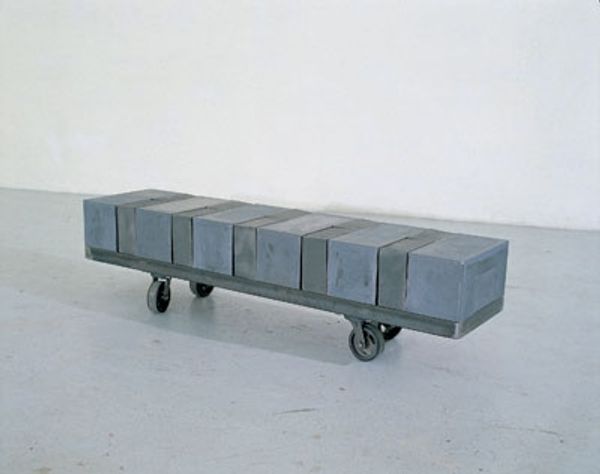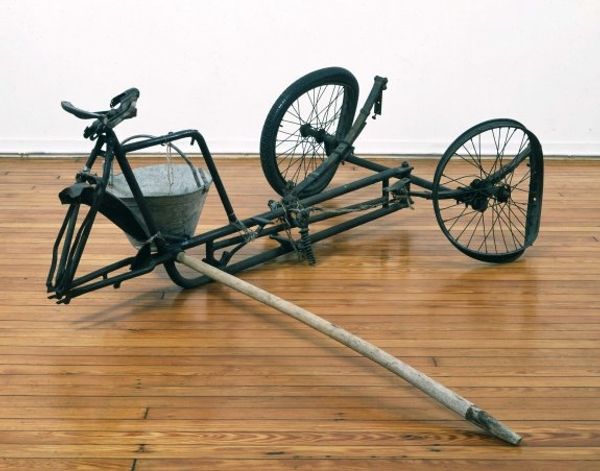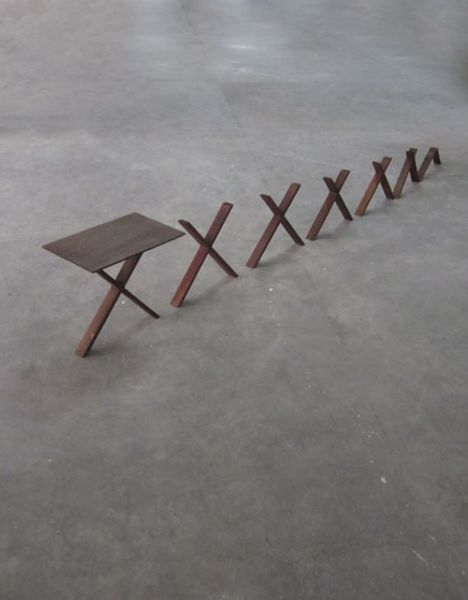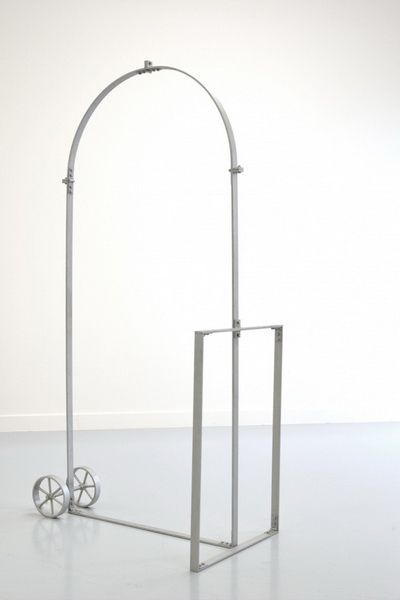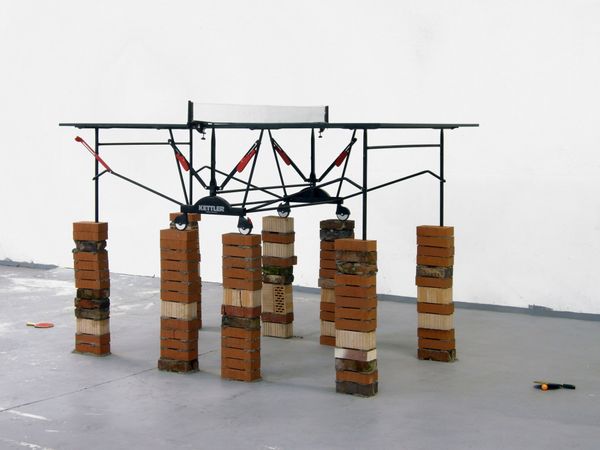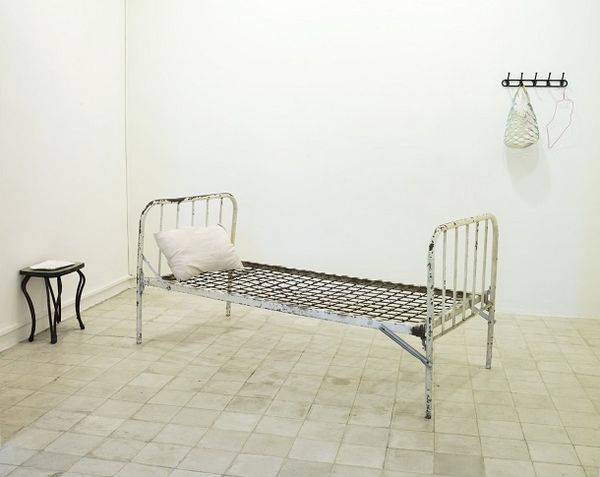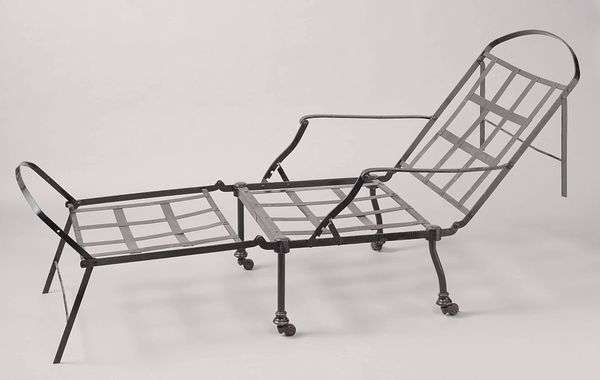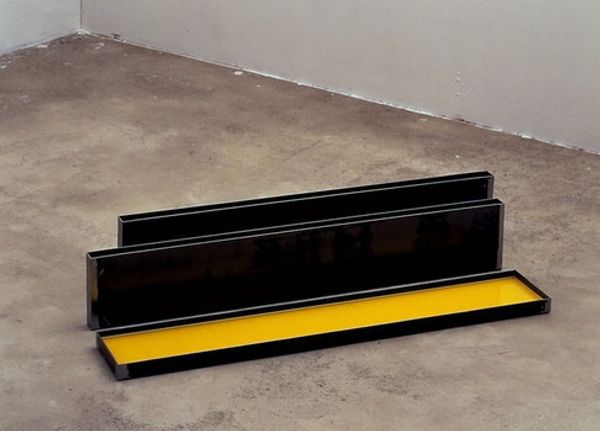
assemblage, found-object, sculpture
#
contemporary
#
conceptual-art
#
assemblage
#
minimalism
#
found-object
#
form
#
sculpture
Copyright: Bill Bollinger,Fair Use
Bill Bollinger created these two untitled wheelbarrows sometime in the late 20th century. These aren’t bronzes cast to resemble wheelbarrows, these are actual, store-bought wheelbarrows placed in a gallery setting. Bollinger’s sculptures belong to a tendency that emerged in the US during the late 1960s, associated with Minimal and Post-Minimal art. Artists used industrial materials in simple, often repeated forms that seemed to question traditional ideas about artistic skill and the preciousness of art objects. At the time, many were reflecting on the cultural meaning of labor and manufacture, as American industry was undergoing deindustrialization. This shift led artists to incorporate readymade items into their work, blurring the lines between art and everyday life. It challenged the traditional institutions of art. As art historians, we might examine these wheelbarrows as a critique of labor, or investigate them as a statement about the changing role of art institutions in contemporary society. We can use a range of different tools to study this, from critical theory to social history.
Comments
No comments
Be the first to comment and join the conversation on the ultimate creative platform.
